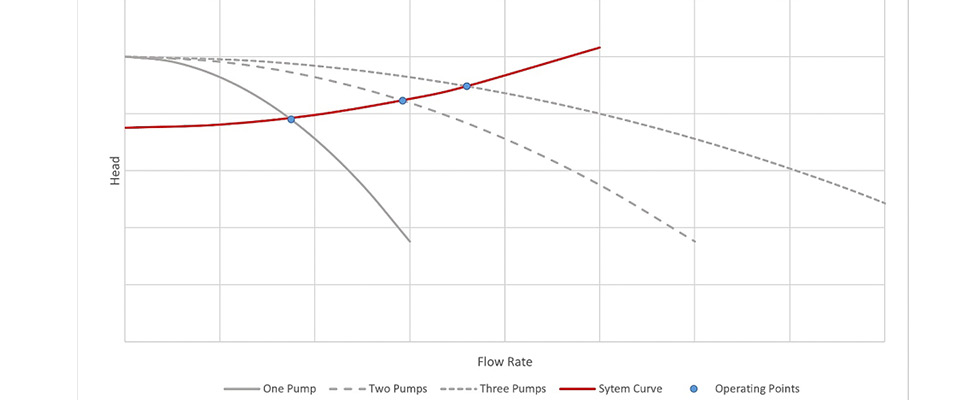
Operating pumps in parallel means multiple pumps take suction (inlet) from and discharge (outlet) to a common header, meaning the suction and discharge pressures will be nearly identical. The idea is that each pump will share the flow requirement while operating at the same differential pressure or total head. The parallel pump curve is derived from the individual pump curves by adding the flow rate at the common head. Image 1 shows three identical pumps operating in parallel. The “Two Pumps” curve was derived by doubling the individual flow rate, and the “Three Pumps” curve was derived by tripling the individual flow rate while maintaining a constant total head. There are three operating points noted where the red system curve intersects the “One Pump,” “Two Pumps” and “Three Pumps” curves. This is a reminder the actual system flow rate will not double or triple, so there should be an evaluation of the pump curves and system curves to understand how the total and individual pump flow rates will change when operating pumps in parallel.

For additional information on pump curves and varying the system operating point, refer to the Hydraulic Institute’s Free Engineering Data Library at edl.pumps.org.

